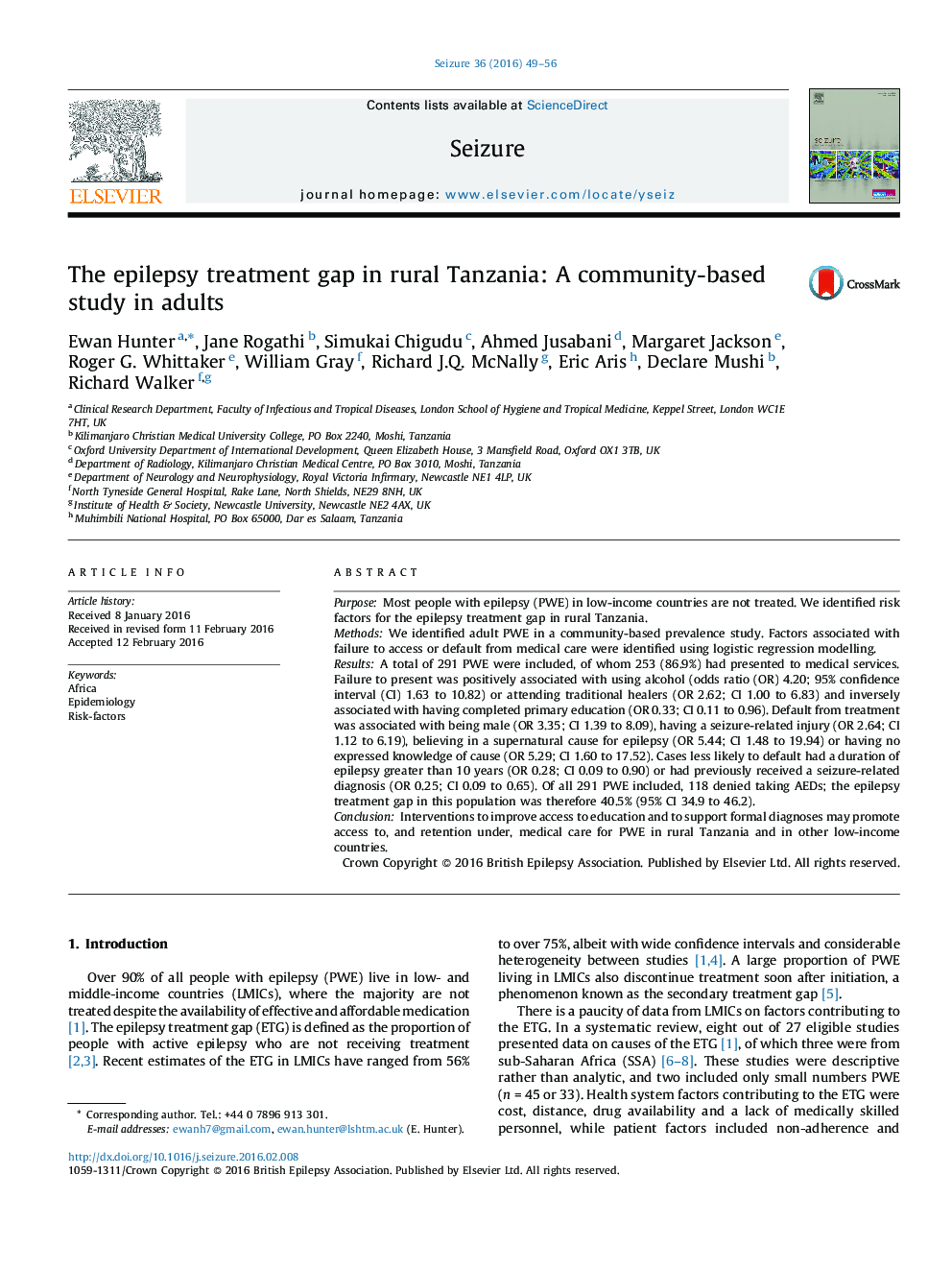| Article ID | Journal | Published Year | Pages | File Type |
|---|---|---|---|---|
| 340479 | Seizure | 2016 | 8 Pages |
•A community-based study of the epilepsy treatment gap in rural Tanzania.•Factors associated with the treatment gap identified using regression modelling.•Improving access to education and formal diagnosis may reduce the treatment gap.
PurposeMost people with epilepsy (PWE) in low-income countries are not treated. We identified risk factors for the epilepsy treatment gap in rural Tanzania.MethodsWe identified adult PWE in a community-based prevalence study. Factors associated with failure to access or default from medical care were identified using logistic regression modelling.ResultsA total of 291 PWE were included, of whom 253 (86.9%) had presented to medical services. Failure to present was positively associated with using alcohol (odds ratio (OR) 4.20; 95% confidence interval (CI) 1.63 to 10.82) or attending traditional healers (OR 2.62; CI 1.00 to 6.83) and inversely associated with having completed primary education (OR 0.33; CI 0.11 to 0.96). Default from treatment was associated with being male (OR 3.35; CI 1.39 to 8.09), having a seizure-related injury (OR 2.64; CI 1.12 to 6.19), believing in a supernatural cause for epilepsy (OR 5.44; CI 1.48 to 19.94) or having no expressed knowledge of cause (OR 5.29; CI 1.60 to 17.52). Cases less likely to default had a duration of epilepsy greater than 10 years (OR 0.28; CI 0.09 to 0.90) or had previously received a seizure-related diagnosis (OR 0.25; CI 0.09 to 0.65). Of all 291 PWE included, 118 denied taking AEDs; the epilepsy treatment gap in this population was therefore 40.5% (95% CI 34.9 to 46.2).ConclusionInterventions to improve access to education and to support formal diagnoses may promote access to, and retention under, medical care for PWE in rural Tanzania and in other low-income countries.
